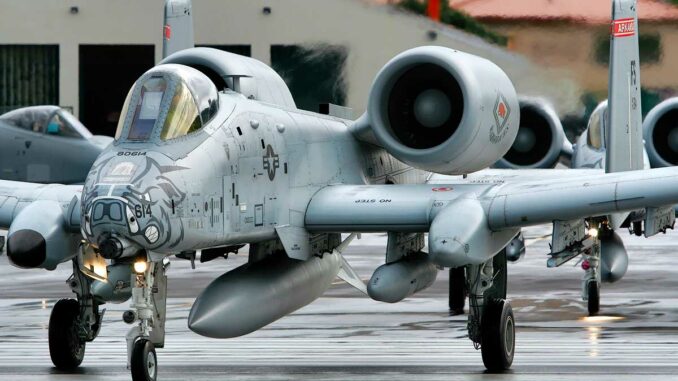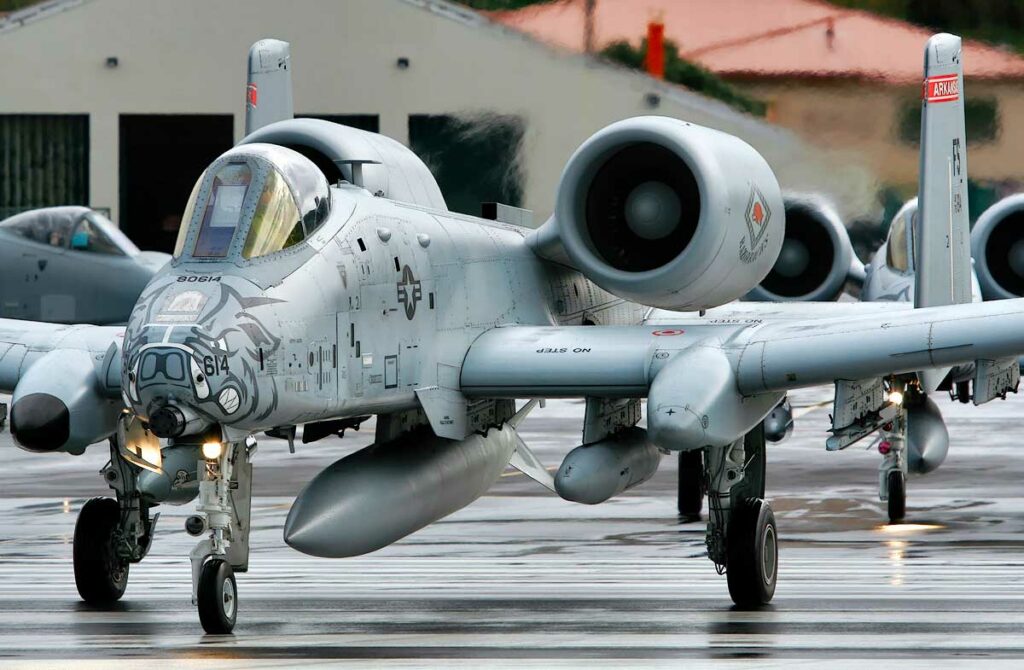
The US Air Force is accelerating the retirement of the A-10 Thunderbolt II, also known as the Warthog, to modernize its fleet with more versatile F-15EX and F-35 aircraft.
Announcement of early retirement for the A-10 Thunderbolt II
The US Air Force now plans to completely withdraw the Fairchild Republic A-10 Thunderbolt II from its inventory by fiscal year 2026. This measure represents a significant acceleration of the withdrawal of the A-10 fleet, originally planned for the end of the decade.
This decision is based on a current estimate of 162 A-10Cs still in service, all of which are scheduled to be retired by the end of 2026. $57 million in funding is being requested to finance this process.
The strategic and financial context of the decision
The accelerated withdrawal is part of a broader modernization strategy: the US Air Force plans to retire approximately 340 obsolete aircraft, including 162 A-10s, to refocus its resources on more modern aircraft.
The defense budget requested for 2026 amounts to $211 billion, divided between $184.9 billion for the US Air Force and $26.1 billion for the Space Force. The reform also envisages $38.6 billion in mandatory spending, bringing the total to $249.5 billion, an increase of 17.2% compared to 2025.
The central role of the A-10 Thunderbolt II in close air support
The Fairchild Republic A-10 Thunderbolt II, nicknamed Warthog, is an attack aircraft designed for close air support (CAS). It is equipped with an imposing GAU-8 Avenger 30 mm cannon that is highly effective against armored vehicles.
Its unique features include its robustness and damage tolerance, allowing it to fly even with severe damage. It has been modernized (A-10C version, avionics upgrades, precision strike capabilities) to remain operational.
Against modern threats, it remains relatively invulnerable compared to other aircraft, but is less suited to heavily defended environments or high-tech missions. The US Air Force now considers its use too risky.

Modernization focused on the F-15EX and F-35
To compensate for the disappearance of the A-10, the US Air Force is relying on aircraft such as the F-15EX and F-35. The budget requests $3.1 billion to acquire 21 F-15EXs, but reduces the purchase of F-35As from 74 to 47 units.
The resources freed up could also fund new-generation programs such as the B-21 Raider or the future F-47, a sixth-generation aircraft.
Mixed reactions from Congress and veterans
Some voices in Washington are considering limiting the total withdrawal. A Senate bill would require at least 103 A-10s to remain in service in 2026.
Veterans and retired senior officers have publicly denounced this plan. They emphasize the unique value of the A-10 for tactical support of troops, pointing out that its survivability and psychological impact are irreplaceable.
Operational impacts and tactical questions
The disappearance of the A-10 poses several challenges:
- Close air support: the A-10 is a benchmark in CAS, prized by the infantry for its accuracy and resilience. Multi-role aircraft such as the F-35 or F-15EX do not have the same weaponry or range.
- Training and doctrine: the US Air Force will have to adapt its methods so that F-35 or F-15EX pilots can effectively carry out CAS missions.
- Cost/logistics: modernizing, maintaining, and deploying a multi-role fleet is less expensive than maintaining an aging specialized aircraft. Hence the budgetary appeal of the reform.
A technical transition, but a lasting legacy
The A-10 has served for more than 50 years, since the 1970s, with life extensions through programs such as HOG-UP and TUSK, allowing it to operate until 2040 if necessary.
Its accelerated retirement is not only a technical decision, but also marks the end of a strategic era based on robustness and a unique mission. For some, this withdrawal could be interpreted as an irreversible turning point in the way the US Air Force views ground support.
The accelerated retirement of the A-10 Thunderbolt II illustrates a sensitive tension between proven tactical heritage and the need for modernization. The US Air Force is betting on a more versatile fleet, but risks losing a unique support capability. The outcome will depend as much on technical trade-offs as on political choices. As the A-10 leaves the hangar, crucial questions remain unanswered: how to maintain effective ground support and how to train its successors in a world where every aircraft is becoming more expensive and more technological?
War Wings Daily is an independant magazine.